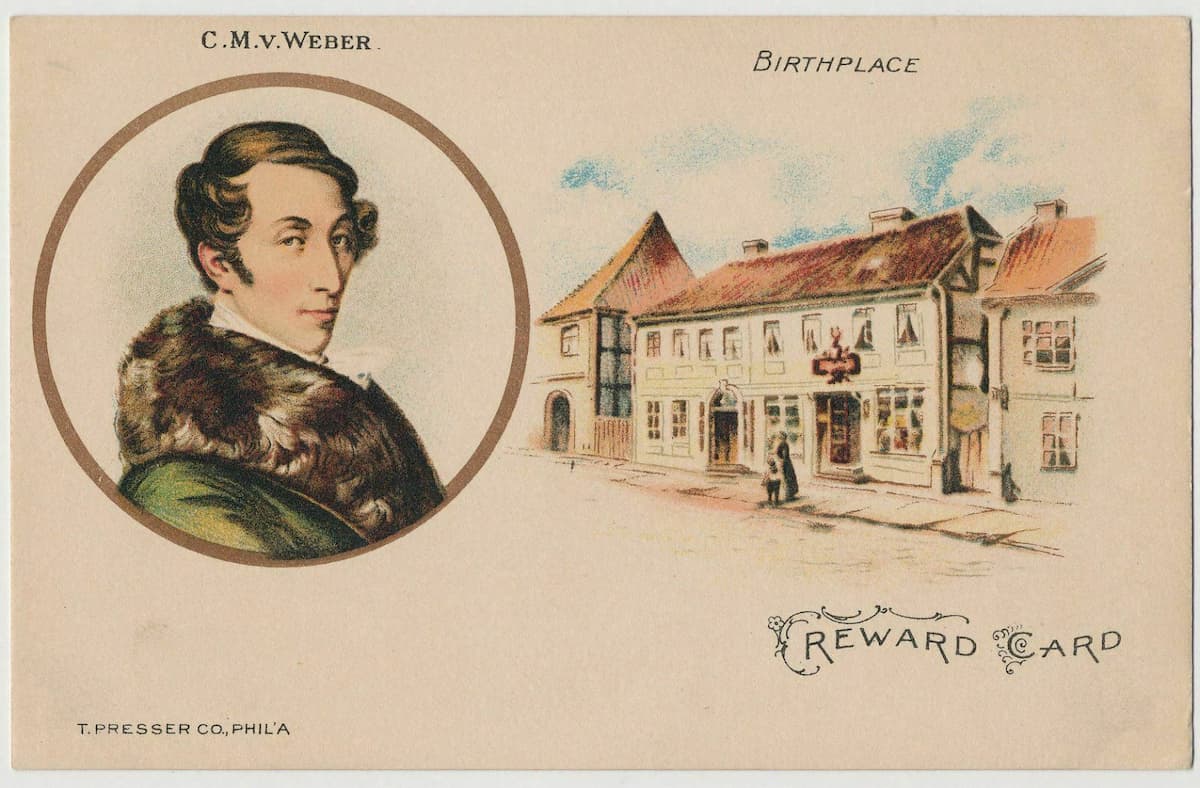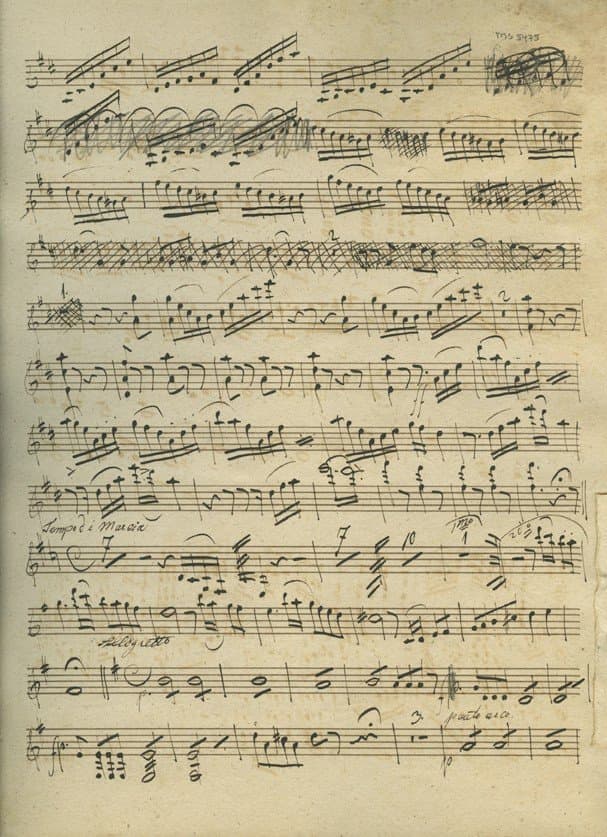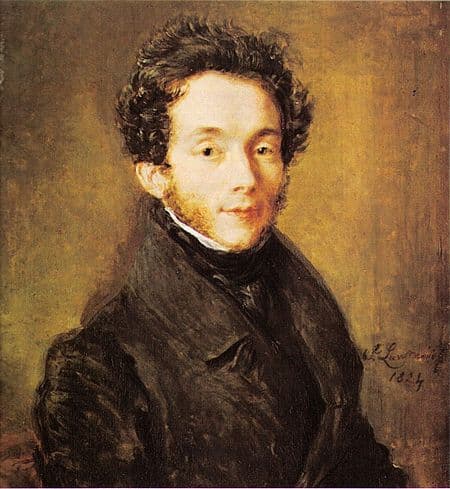Carl Maria von Weber (1786-1826) stunned the musical world in 1821 with the premier performance of Der Freischütz (The Marksman). Setting his career as a pianist and critic aside, Weber had created a work that fully embodied the energies of the youthful Romantic Movement. In fact, he had composed an opera that fully incorporated elements of mysticism, folk materials, and a strong dose of the supernatural. The work defined German romanticism and established it as the musical force in Europe for the rest of the century.
Carl Maria von Weber: Der Freischütz, “Wolf’s Glen Scene”
18, 19, or 20 November or December?
There is nothing supernatural about Weber’s early biography, but the exact date of his birth remains somewhat of a mystery. For the vast majority of his life, Weber celebrated 18 December as his birthday, but in 1817 he learned from the official registry at Eutin that the date of his baptism had been recorded as November 20. In his later years he observed his birthday on November 19, a date that coincided with his wife’s presumed birthday and with their anniversary of marriage.

Carl Maria von Weber’s birthhouse in Eutin
Another curious item in Weber’s biography is the aristocratic “von” in his name. This turned out to be an invention of his father, the town musician and sometimes Kapellmeister at Eutin, Franz Anton Weber. He had simply appropriated the title “Baron” and “von” in his name from a long extinct Austrian noble family. Car Maria was the eldest of three children born to Franz Anton and his second wife, Genovefa Brenner. She was a Viennese soprano who was briefly engaged for Goethe’s theatre in Weimar.
Carl Maria von Weber: 3 Duets, Op. 31, No. 2 “Va, ti consola” (Evelyn Lear, soprano; Thomas Stewart, bass; Erik Werba, piano)
Related to Mozart
Here is another curiosity before we get started with Carl Maria in earnest. Franz Anton von Weber’s half-brother Franz Fridolin married a certain Cäcilia Stamm, and the couple had four daughters, Josepha, Aloysia, Constanze, and Sophie, all of whom became notable singers. You might see the connection already, as Wolfgang Amadeus Mozart attempted to court Aloysia and composed several pieces for her. After she rejected his advances, Mozart went on to marry Constanze; thus Mozart’s wife was a cousin of Carl Maria von Weber.

Carl Maria von Weber: Der Freischütz
Franz Anton and Genovefa dreamt of establishing their own theatre company, composed largely of members of his own family. As such, between 1787 and 1794 the family travelled to Hamburg, Vienna, Kassel, Meiningen, Nuremberg, Bayreuth, Erlangen, and Augsburg. The family troupe was in Salzburg in 1795 and 1796, now under the direction of Weber’s half-brother Edmund. According to Carl Costenoble, a member of the company in 1795, its repertory included plays by Iffland and Kotzebue, and operas by Mozart, Wenzel Müller, Neefe, and Edmund Weber.
Carl Maria von Weber: Piano Concerto No. 1 in C Major, Op. 11 (Luisa Imorde, piano; Bremen Philharmonic Orchestra; Marie Jacquot, cond.)
The Makings of a Prodigy

Painting of Carl Maria von Weber by Thomas Lawrence
By all accounts, Carl Maria von Weber was a subtle and gentle person by nature. He had been born a weak and lame child, suffering from a congenital hip disorder that caused him to limp. Apparently, he did not begin to walk until he was four years old. By that time, however, he was already an accomplished pianist and singer. His father, a gifted violinist, had decided to turn Weber into a child prodigy like Mozart. He provided a comprehensive education to his son, which was nevertheless frequently interrupted by the hectic family travel schedule.
When the family arrived in Salzburg in 1797, Weber studied with Michael Haydn free of charge. He also visited Michael’s brother Joseph Haydn in Vienna in hopes of advanced training, but it came to naught. The Weber family then moved to Munich, and Carl Maria studied composition with Johann Nepomuk Kalcher, who supervised Weber’s first opera “The Power of Love and Wine.” That particular work by the 12-year old prodigy, has sadly been lost.
Carl Maria von Weber: Peter Schmoll und seine Nachbarn, “Die Menschen lügen gar zu gern” (People just love to tell lies) (Franz Hawlata, bass; Cologne Radio Chorus; Cologne Radio Orchestra; Helmut Froschauer, cond.)
First Appointment

Carl Maria von Weber conducting
Once the family had moved to Freiberg in Saxony in 1800, Weber wrote an opera titled “The Silent Forest Maiden,” a work produced at Freiberg, Chemnitz and later in Saint Petersburg, Vienna, and Prague. Now aged 14, Carl Maria also started to publish articles as a music critic. He also continued his studies with Michael Haydn in 1801, and two years later took lessons with Abbé Vogler in Vienna. The teenage Weber quickly gained access to the upper echelons of Viennese musical society and met Salieri, Schuppanzigh, Hummel, and Joseph Haydn, but he never mentioned Beethoven.
It was Vogler’s influence and recommendation that secured the 17-year-old Weber the post of conductor and Director at the Breslau Opera in 1804. During his two-year tenure, Weber enlarged the orchestra and insisted one strict discipline at rehearsals and performances. He introduced a new orchestral seating arrangement, placing the first violins on the conductor’s right and the second violins and violas on his left. Weber performed an ambitious repertory including many operas by Mozart, but disagreements with the theatre management prevented an extension to the contract.
For more of the best in classical music, sign up for our E-Newsletter

Tragically Weber die too young to fulfill all his potential but he ushered in the Romantic Opera tradition and some brilliant Orchestral works like the Romanza Siziliana for Flute and Orchestra and the Trio in G for Flute; Cello and Piano. Both works I have performed often.